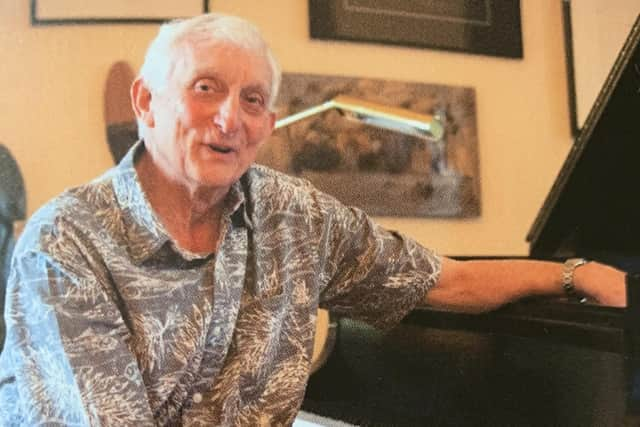Scotsman Obituaries: Professor Jim Vincent, aerosol scientist and pianist
Jim Vincent arrived in Edinburgh in 1979 to work as Head of Physics at British Coal’s Institute of Occupational Medicine (IOM), coinciding with the appointment as prime minister of Margaret Thatcher, who had her eye on the contraction of the coal industry.
He quickly established himself as an innovative scientist and an enthusiastic collaborator across disciplines, as well as a mentor of his younger colleagues working towards their own PhDs.
Advertisement
Hide AdAdvertisement
Hide AdAnd it soon became apparent that there was another equally impressive side to this modest and affable man, as he received invitations to play piano professionally and to accompany distinguished musicians at the Edinburgh Festivals, in both jazz and classical genres.


Jim was born in England to a working-class family and graduated in physics at the University of Durham with first-class honours in 1962, proceeding to a PhD in 1966.
He then moved to the USA as a research scientist for the American Standard Corporation, working on the electrostatic properties of particles.
Jim returned to the UK in 1972 as Lecturer in Applied Physics at the University of Strathclyde to extend his work on the development of practical electrostatic precipitators to remove contaminant aerosols from gas streams, research of obvious relevance to control of pollution.
In 1979 he was recruited to the IOM and took over a research team that had been working on sampling of dusts for studies of the risks of lung disease in coal miners and other workers.
They had a particular interest in accurate measurement of the size fractions of dust in air that would be inhaled into different parts of the respiratory tract from nose to the furthest small airways.
Jim’s team defined the sampling criteria, in collaboration with other European scientists and, in 1986, published the description and experimental characterisation of the IOM Inhalable Dust sampler, which they showed to be superior to the alternative devices.
This sampler was subsequently recommended by the British Health and Safety Executive for measuring dust exposure in workplaces. Its design, which the IOM patented, has remained essentially unchanged for almost 40 years, and is now used throughout the world.
Advertisement
Hide AdAdvertisement
Hide AdIOM was also involved in research to prevent other dust diseases, including those caused by asbestos. Accurate sampling of such dusts is essential to understanding and preventing them, and Jim put his mind to fibrous dusts, contributing importantly to joint studies with toxicologists that determined the physical characteristics of fibres that caused their toxicity.
This had enormous implications for the assessment of any new fibrous materials that might be introduced into industry, particularly when nanotechnologists started to make the extremely small nanofibers.
Jim’s research at IOM was recognised by his election to presidency of the British Occupational Hygiene Society, by his award of a DSc by Durham University for his distinguished record of scientific publications, and the publication of the first of his five books on aerosol science.
But by 1990 the IOM was required by British Coal to stand alone and became a self-funding charitable research institute; Jim’s research was to form a critical component of its subsequent success, leading to its 50th anniversary in 2019.
However, all the senior staff had to retire or move to ensure its viability and Jim was quickly recruited to a professorial chair at the University of Minnesota.
In 1998 he was appointed Chairman of the Department of Environmental Health Sciences at Ann Arbor, University of Michigan, where he continued his research and contributions to the sciences involved in protection of people from airborne hazards.
Apart from his books, Jim retired with more than 200 peer-reviewed papers and no fewer the seven patented devices to his name.
Jim was married very happily twice, first for 47 years to Christine, with whom he had two sons and two daughters.
Advertisement
Hide AdAdvertisement
Hide AdChristine tragically developed an early dementia, through which he cared for her devotedly.
After Christine’s death he met and married Linda Dunning, who came originally from Glasgow, and in his retirement from science Jim was able to return with her fully to his love of music, entertaining, and travel (especially back to Scotland), composing at his beloved grand piano, and mailing his pieces to his friends worldwide.
His final illness arrived unexpectedly, a diagnosis of disseminated cancer at a time when he appeared to be as full of life as ever. The course of treatment was mercifully short but gave him time to send one last piece of music to his friends.
OBITUARIES
If you would like to submit an obituary (800-1000 words preferred, with jpeg image), or have a suggestion for a subject, contact [email protected]
SUBSCRIBE
Subscribe at www.scotsman.com/subscriptions
